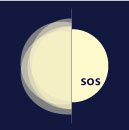|
|
 |
 |
Abstract Review
 Corresponding Author Corresponding Author |
|
|
 |
 Authors Authors |
| Name |  | Affiliation |
|
Chiara Bertolin |
 |
Institute of Atmospheric and Climate Sciences. Bologna. Italy |
|
Casiana Muñoz-Tuñón |
 |
Instituto de Astrofísica de Canarias. Tenerife. Spain |
|
Jesús J. Fuensalida |
 |
Instituto de Astrofísica de Canarias. Tenerife. Spain |
|
Sergio Ortolani |
 |
University of Padova. Italy. |
|
 |
 Abstract Abstract |
| Session |  | 1 (Instrumentation and observations to quantify the magnitude and distribution of atmospheric optical turbulence.) |
| Title |  | 'On the Use of Satellite data for Atmospheric Extinction Studies' |
| Abstract |  | Atmospheric extinction is the astronomical parameter that evaluates the sky transparency and it is associated with the absorption/scattering of Earth's atmosphere. Sources of sky transparency degradation are the presence of clouds (water vapour) and airborne aerosols (dust particles included). The aerosol index provided by the TOMS (Total Ozone Mapping Spectrometer) is one of the most widely accepted products to detect the daily aerosol content. There are local measurements, since 1984, providing extinction values in routine mode at the Roque de los Muchachos Observatory (ORM-2396m) on La Palma (Canary Islands). Previous works have demonstrated that there is no linear correlation between aerosol index provided by the TOMS and the measured atmospheric extinction coefficient. The reasons behind are the spatial grid sampling of the satellite combined with the abrupt orography of the area. Given that, this situation can also affects to places like Mauna Kea or other sites with similar geographical conditions. We are exploring the usefulness of data provided by different spectrographs onboard NASA and ESA satellites with better spatial and temporal resolutions than TOMS and centered on channels of astronomical interest as a possible tool for site characterization. Data analysis need to be complemented with those provided by in situ instruments (telescopes, airborne particles counters, ground meteorological stations, etc.).
|
|
Return to Program and Events
|
 |
 |
|



